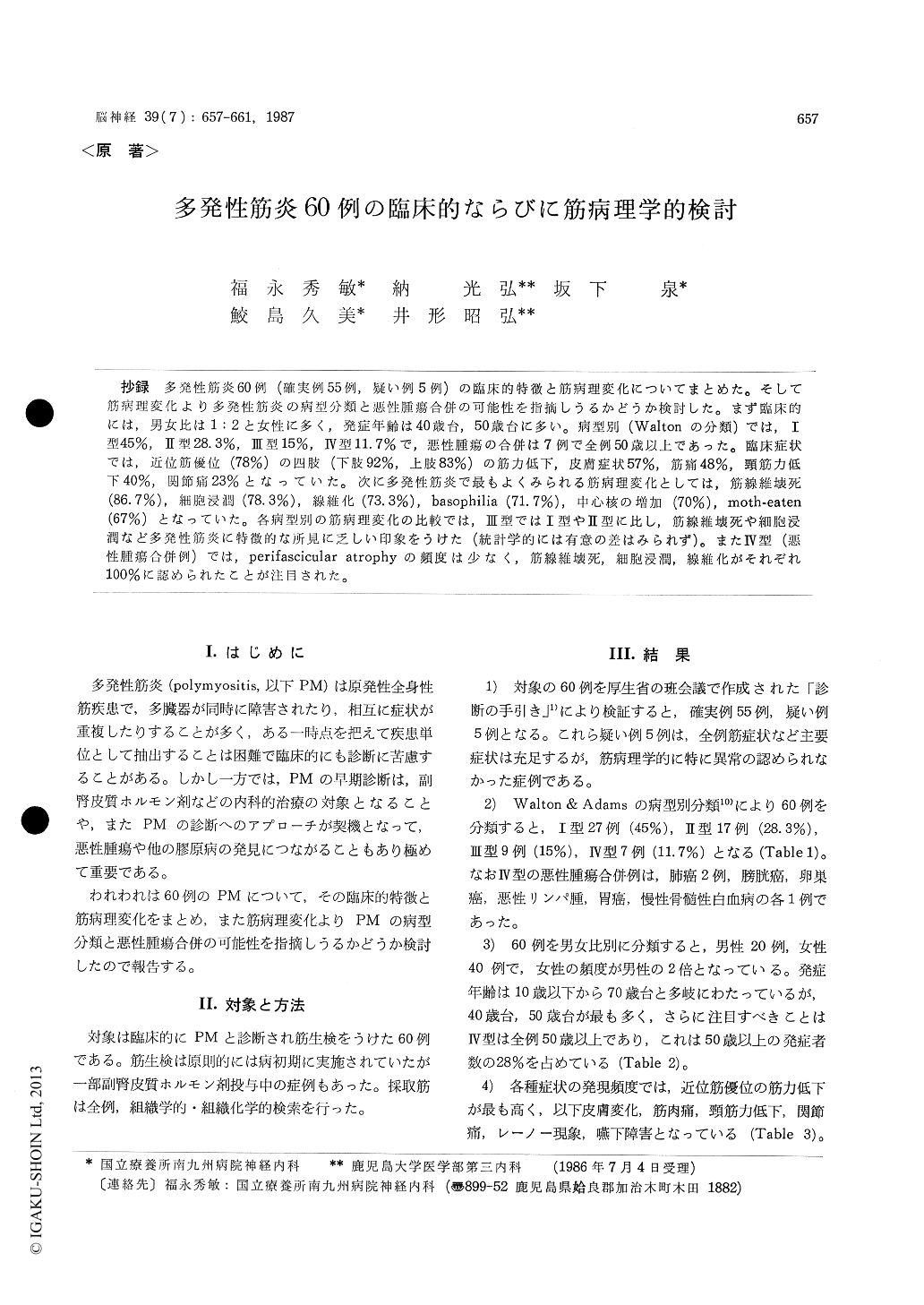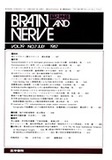Japanese
English
- 有料閲覧
- Abstract 文献概要
- 1ページ目 Look Inside
抄録 多発性筋炎60例(確実例55例,疑い例5例)の臨床的特徴と筋病理変化についてまとめた。そして筋病理変化より多発性筋炎の病型分類と悪性腫瘍合併の可能性を指摘しうるかどうか検討した。まず臨床的には,男女比は1:2と女性に多く,発症年齢は40歳台,50歳台に多い。病型別(Waltonの分類)では,I型45%,II型28.3%,III型15%,IV型11.7%で,悪性腫瘍の合併は7例で全例50歳以上であった。臨床症状では,近位筋優位(78%)の四肢(下肢92%,上肢83%)の筋力低下,皮膚症状57%,筋痛48%,頸筋力低下40%,関節痛23%となっていた。次に多発性筋炎で最もよくみられる筋病理変化としては,筋線維壊死(86.7%),細胞浸潤(78.3%),線維化(73.3%),basophilia (71.7%),中心核の増加(70%),moth-eaten(67%)となっていた。各病型別の筋病理変化の比較では,III型ではI型やII型に比し,筋線維壊死や細胞浸潤など多発性筋炎に特徴的な所見に乏しい印象をうけた(統計学的には有意の差はみられず)。またIV型(悪性腫瘍合併例)では,perifascicular atrophyの頻度は少なく,筋線維壊死,細胞浸潤,線維化がそれぞれ100%に認められたことが注目された。
The present report analyzed a clinical and myopathological findings of 60 patients defined for the diagnosis of polymyositis. Patients were classified in four groups according to the system Walton and Adams. Forty five per cent were classified as Group I , 28.3 per cent as Group II, 15.0 per cent as Group III and 11.7 per cent as Group IV. Seven patients were associated with a malignant neoplasm and all of them were over fifty. The primary growth was carcinoma of the lung in 2, of the prostate, ovarium, stomach in one case each, and in one case a chronic myelo-genous leukemia and in one case a malignant lymphoma.
The female to male ratio was 2: 1. Though cases were seen in all age groups, the largest number was in the sixth decade. The presenting symptoms and signs were essentially similar to those reported before. Proximal lower and upper limb weakness was the most frequent symptoms (91.7 and 83.3 per cent respectively). Other cha-racteristic symptoms were skin changes, muscle pain, arthralgia and Raynaud's phenomenon. The CK was measured at the time of presentation in 58 of the 60 cases. Normal values were found in 18.3 per cent of cases.
In general, muscle biopsy was performed in the first stage of the disease. A diagnostically abnomal biopsy was 55 cases (92 per cent), but 8 per cent of cases had normal biopsy. The characteristic changes in the biopsies from 60 cases were muscle fiber necrosis, inflammatory infiltration, fibrosis, basophilia and increase of internal nuclei.
We could not get a significant difference between the two groups. However all of the cases of Group IV had muscle fiber necrosis, inflammatory infiltration and fibrosis.

Copyright © 1987, Igaku-Shoin Ltd. All rights reserved.


